For several years, every Tuesday night after work, I’d drive from Whiting, Indiana where I taught college, into downtown Chicago to attend a portraiture class in the Fine Arts Building on Michigan Avenue.
The Fine Arts Building is a magical place, 11-stories of dance, yoga, and painting studios, the shops of musical instrument makers, the offices of interior designers, and even the workshop of a troupe of puppeteers.
Before my class I’d have dinner at George Mitchell’s Artist’s Cafe, an iconic Chicago restaurant on the first floor (which has since closed), and after I’d eaten, I’d warm up for my evening class by sketching the cafe staff.
1. The Dragon Lady
Huddled over her adding machine and half-hidden by the display case, the manager was a dragon lady. She guarded the entrance to the Cafe. Anyone who entered had to pass under her skeptical eye.
She scared me.
But like a reckless little boy in a fairy tale, I wanted everything in her display case, especially her coconut cream pie and her black forest cake. One slice of her cake put me completely under the power of the cafe.
The dragon lady accepted only cash. On my first visit, I tried to pay with my credit card, and she pointed a boney finger at the ATM machine, her pitiless robot slave.
The kitchen door behind the dragon lady swung open and shut with her minions: her sweet waitresses, her virile busboy, her sinister bartender—all of them working, working, working, as if under a spell.
2. The Waitresses
My class began at 6:30 p.m. I arrived around 4, before the dinner crowd. I’d grab a booth next to the lunch counter, have a Monte Cristo and a slice of that black forest cake, and then, as if under a spell myself, I’d sketch.
The waitresses were students at Loyola, DePaul, or Roosevelt University. They were Cinderellas, but they had no fairy godmother to say “bibbidi-bobbidi-boo" and make their dreams come true. They were Chicago girls—good-humored, confident, full of Midwestern grit, and they had their heads down.
If they wanted to escape the Dragon Lady’s lair, they were going to have to work their way out, to buy their freedom.
Sketching from life frees the imagination, occupying the mind with facts and releasing the powers of fantasy. It somehow thins the barrier between the conscious and unconscious mind.
Whatever the mechanism, the cafe workers seemed enchanted, as if each one hid a magical identity under his or her commonplace self.
The Hispanic waitress, for instance, was full of good health, with strong arms, warm brown skin, and a thick mane of black hair. As I sketched her, standing alone with arms akimbo among the dishes and glasses, she struck me as a reincarnated Aztec queen—beautiful, statuesque, heroic.
3. The Bartender
Behind the lunch counter was a little booth-like bar with a cash register, a garnish caddy, and glasses hanging from an overhead rack.
Sometimes there was man inside the booth, but I couldn’t figure out his job: manager, bartender, floor supervisor? I never could tell.
His mustache gave him the sinister air of a silent film villain. It wouldn’t have surprised me to learn that he had been arrested for tying one of the waitresses to the Union Pacific railroad tracks.
I’m sure he was a very nice man—they were all friendly in the Artist’s Cafe—but after a long day of work, it wasn’t my stomach only that was growling; my imagination was starved.
4. The Busboy
My favorite character in the whole cafe cast was the Polish busboy. He was virile, happy, and full of good energy, but he moved around so much I couldn’t sketch him. It was frustrating. Finally, I just asked him if he wouldn’t mind posing for a minute or two.
He took up this Napoleonic posture, with his chin up and his right arm behind his back. It was regal, for a busboy, but he was proud of having his portrait done in his full, busboy regalia.
He had a winning personality, and I liked that he liked himself so much. He reminded me of Walt Whitman’s “A Song for Occupations.” The poem urges all workers to see the greatness in themselves.
Why, what have you thought of yourself?
Is it you then that thought yourself less?
Is it you that thought the President greater than you?
Or the rich better off than you? or the educated wiser than you?
5. A Place for Artists
Before I went to my class, I used the cafe’s basement bathroom. It was a dungeon.
The heavy door was in the middle of the wait staff’s work area. To get to the bathroom you had to descend a small but steep flight of uneven concrete steps, and open a second, heavier wooden door.
The bathroom was a narrow, coffin-like closet with a heavy porcelain sink, cracked tile, and creaky plumbing.
Ghosts of old Chicago were in those basement walls. Old Mayor Harold Washington presided over the dead celebrities that had once visited the place—Johnny Carson, Vice President Nelson Rockefeller, Pavarotti.
Whenever I washed my hands at that old porcelain sink and looked at myself in the mirror, I felt like I wasn’t alone. It was deliciously creepy.
And then I took the elevator up to the 6th floor, where my teacher—Chicago Artist Don Yang—had his studio, and I went to work with a handful of fellow artists, learning how to draw portraits.
Our models were real Chicago people, and we worked hard to see them as they really were, but we knew only our imaginations could give them life.
If you liked this post, please click the heart. It increases my visibility on the Substack platform. Thanks!




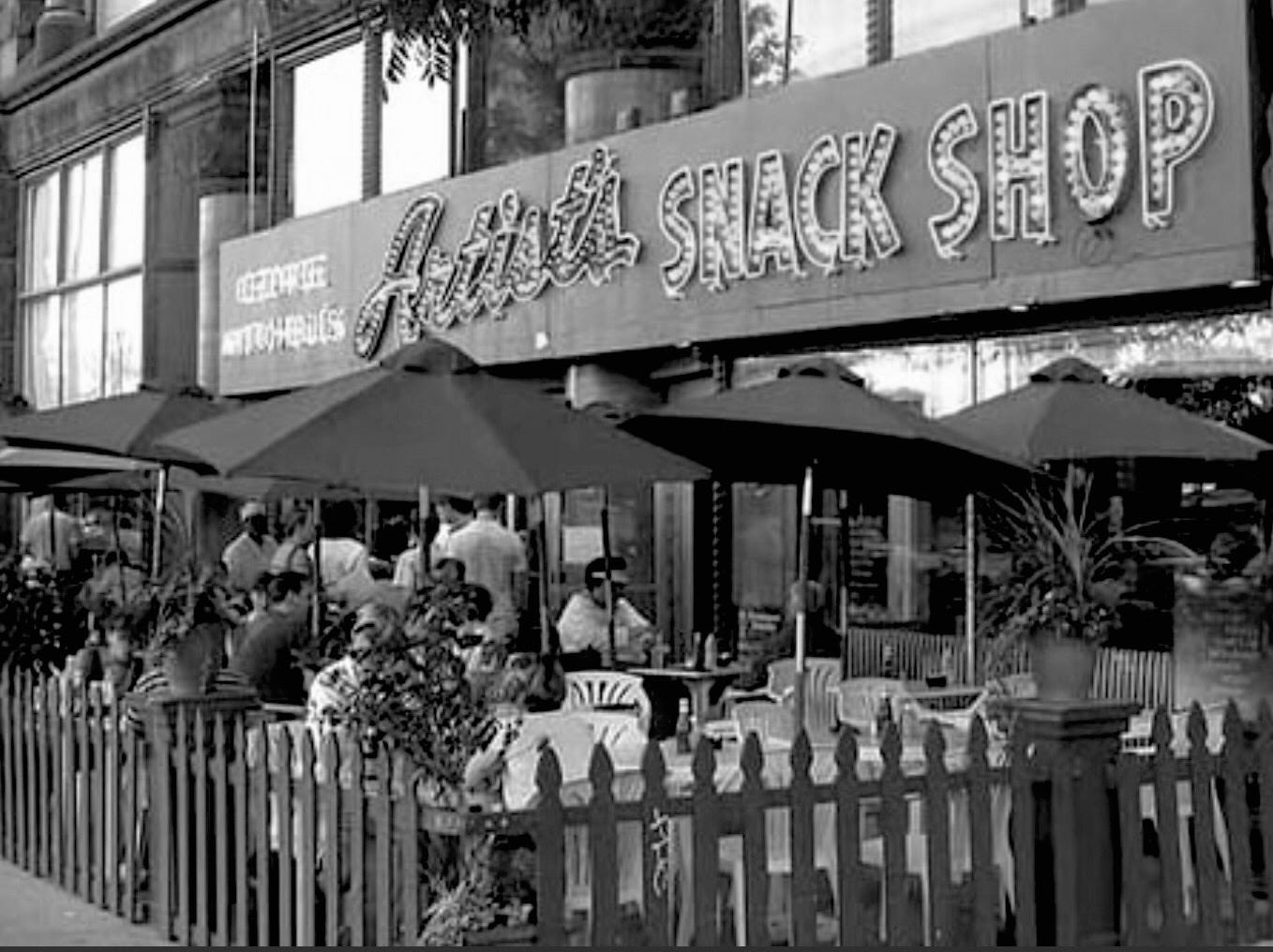
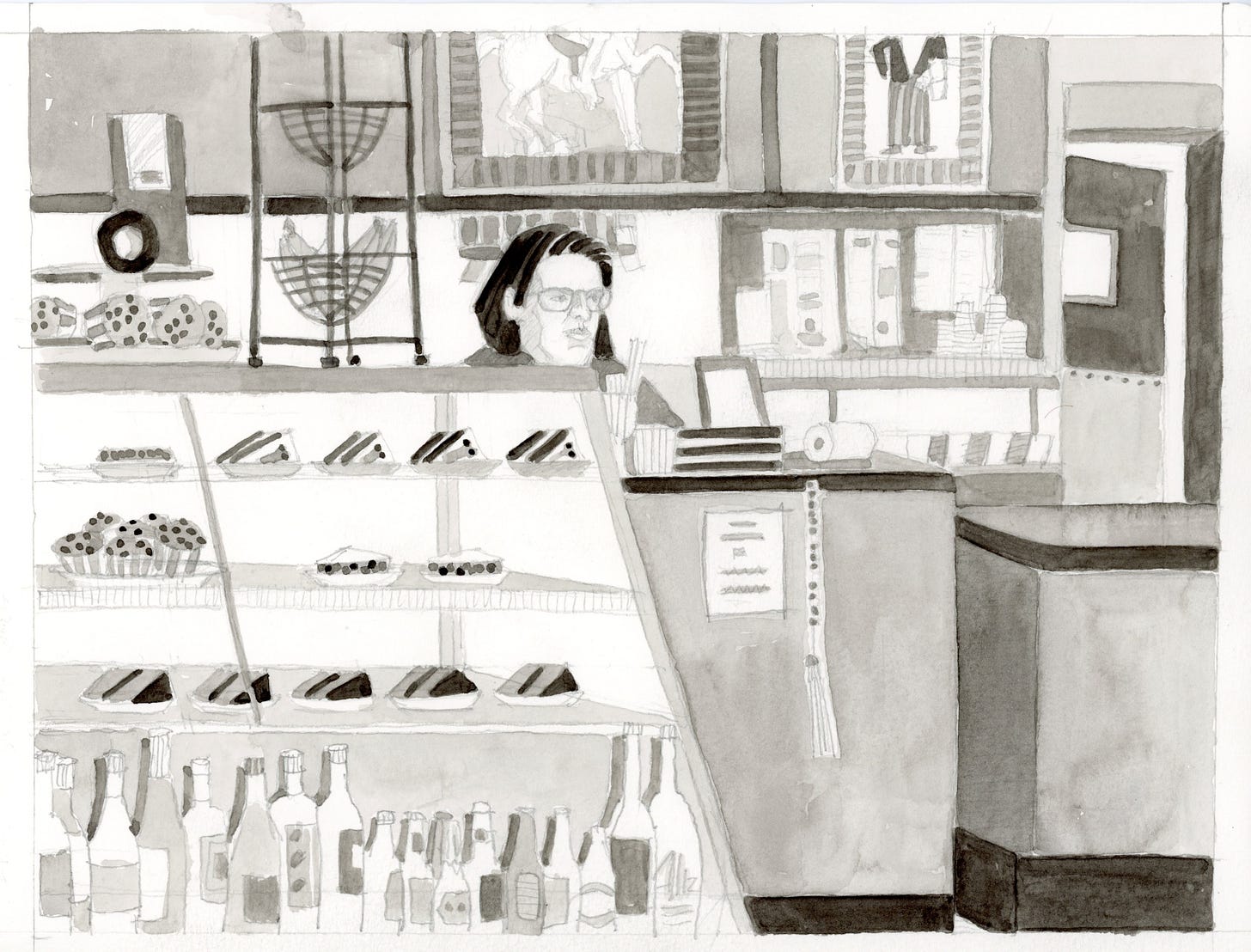
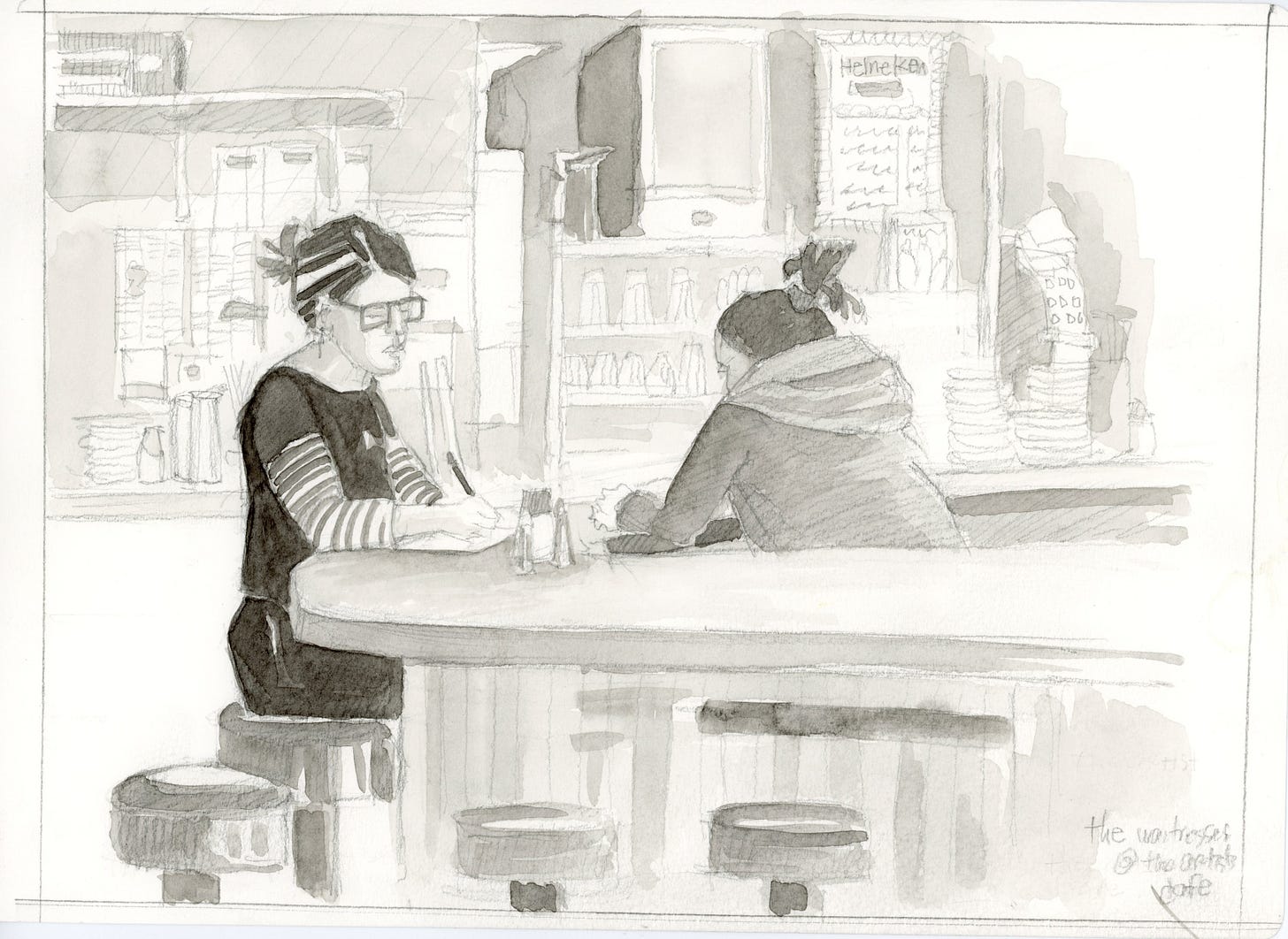
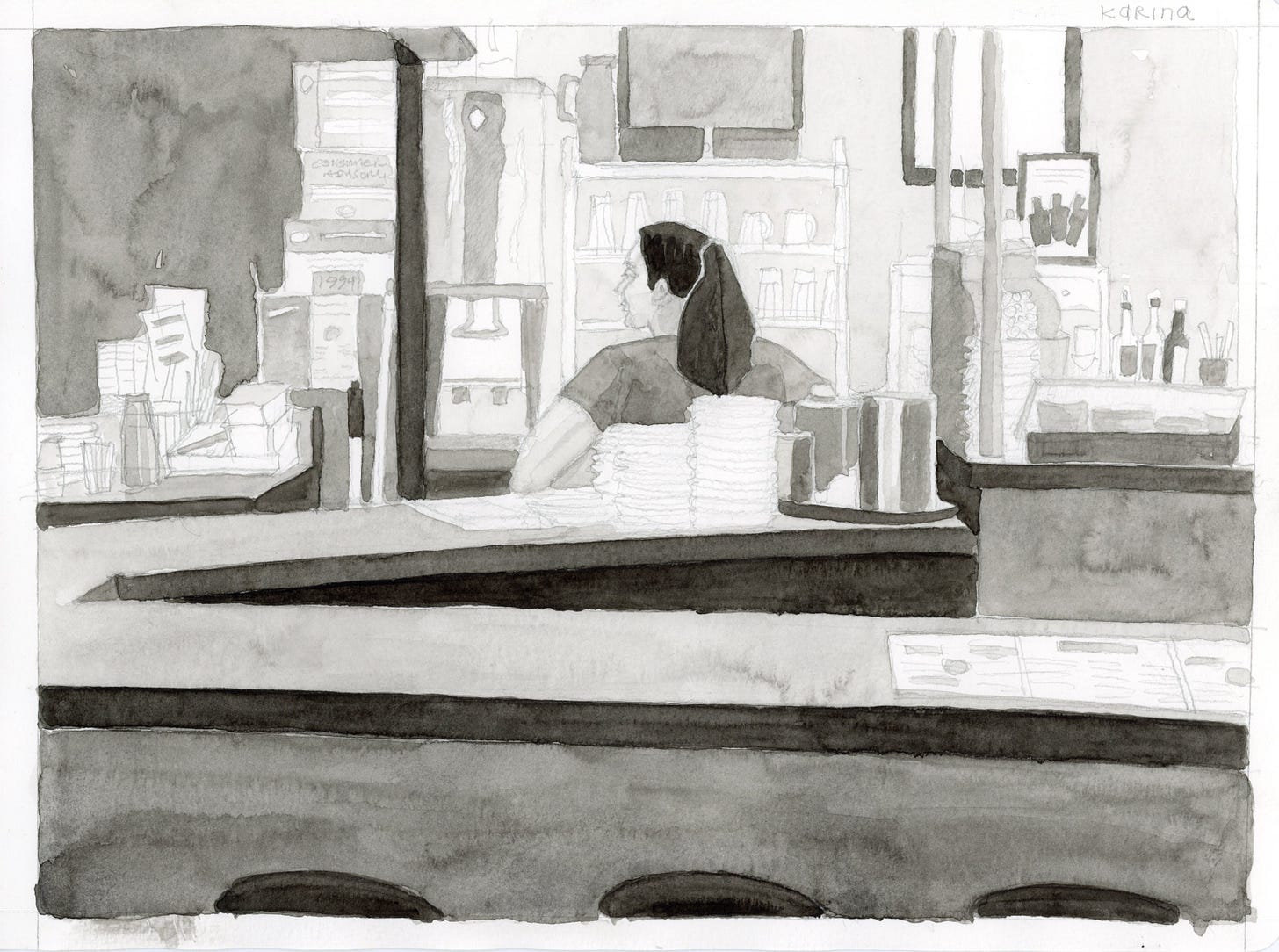
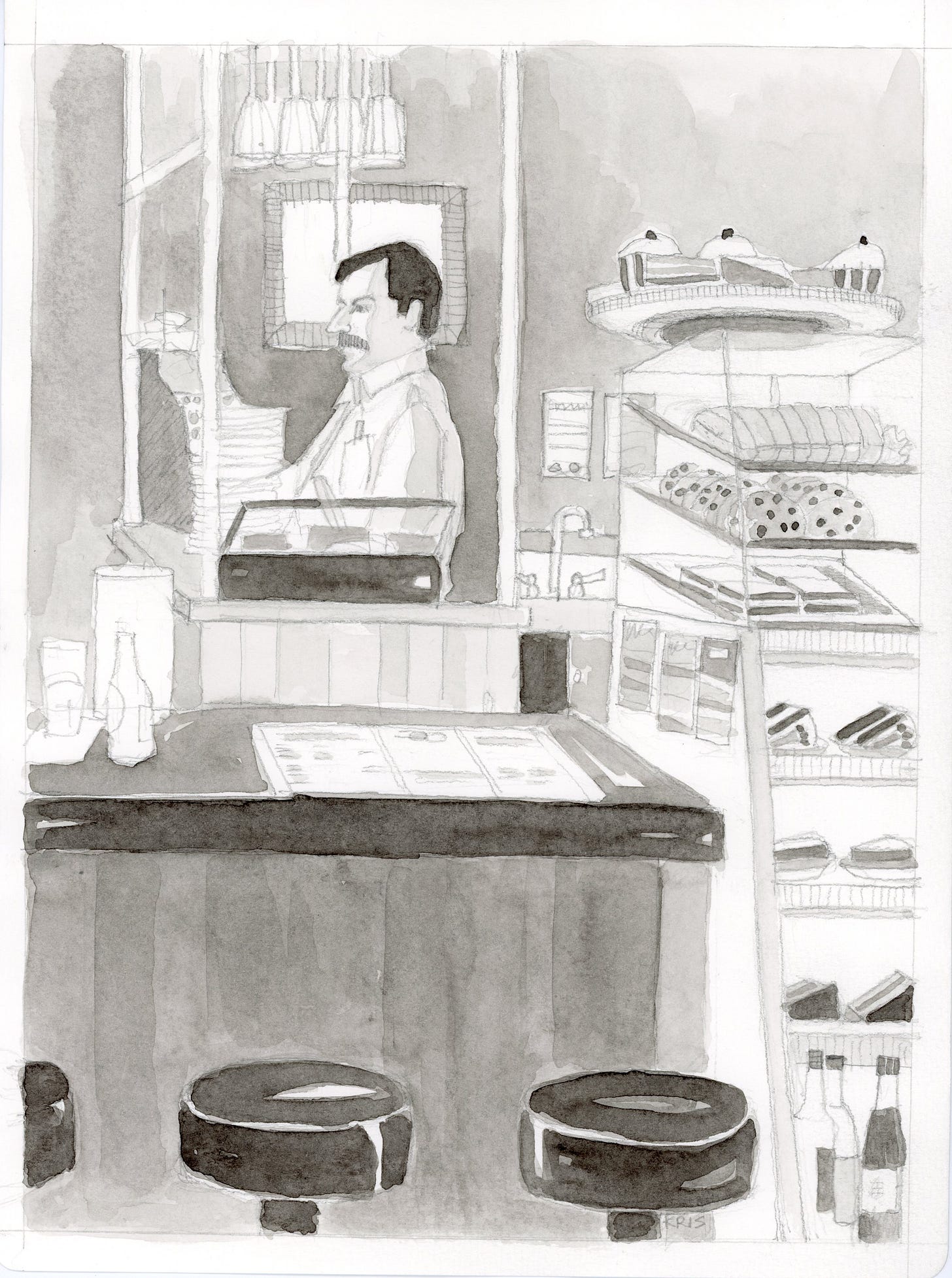
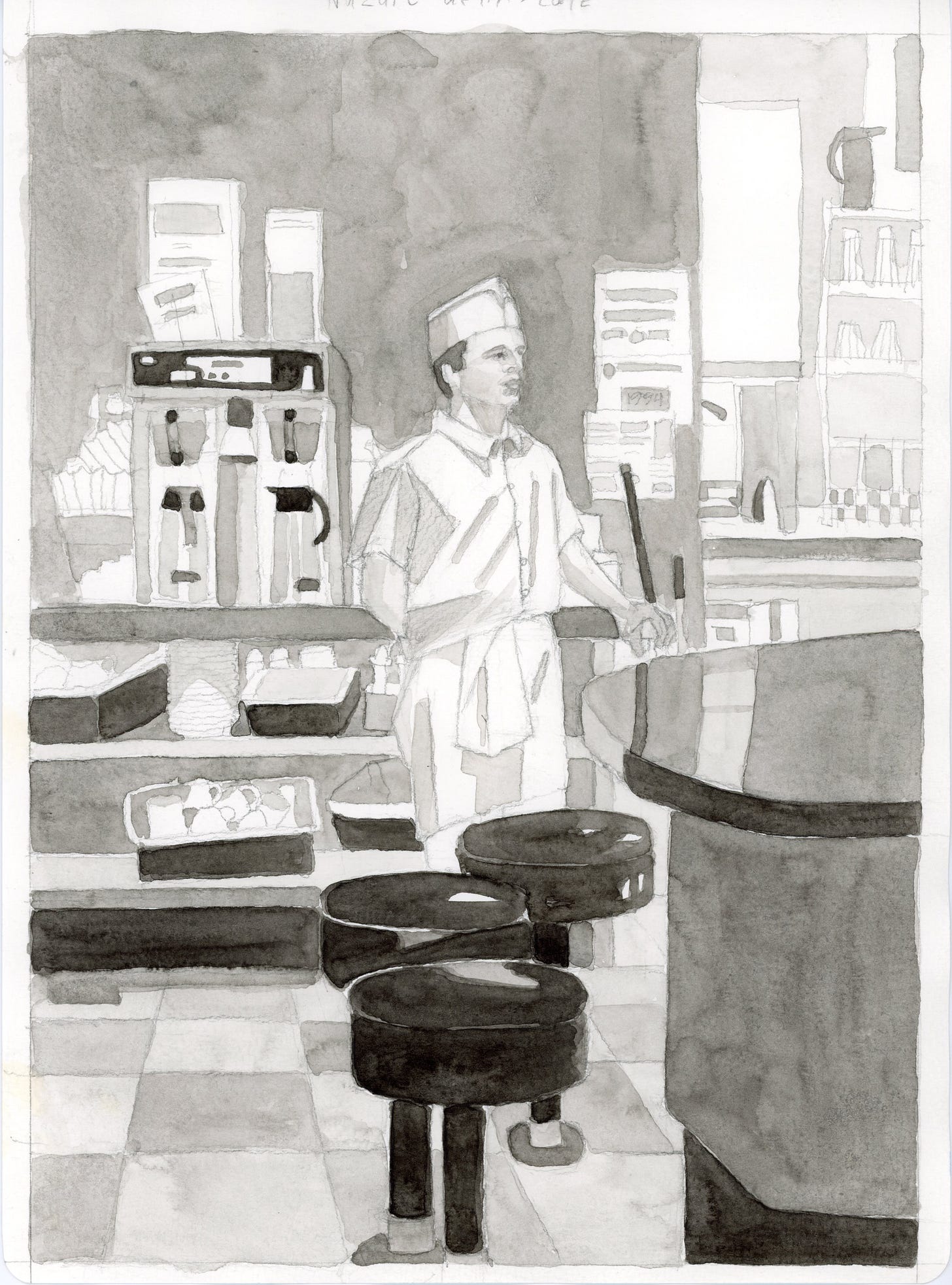
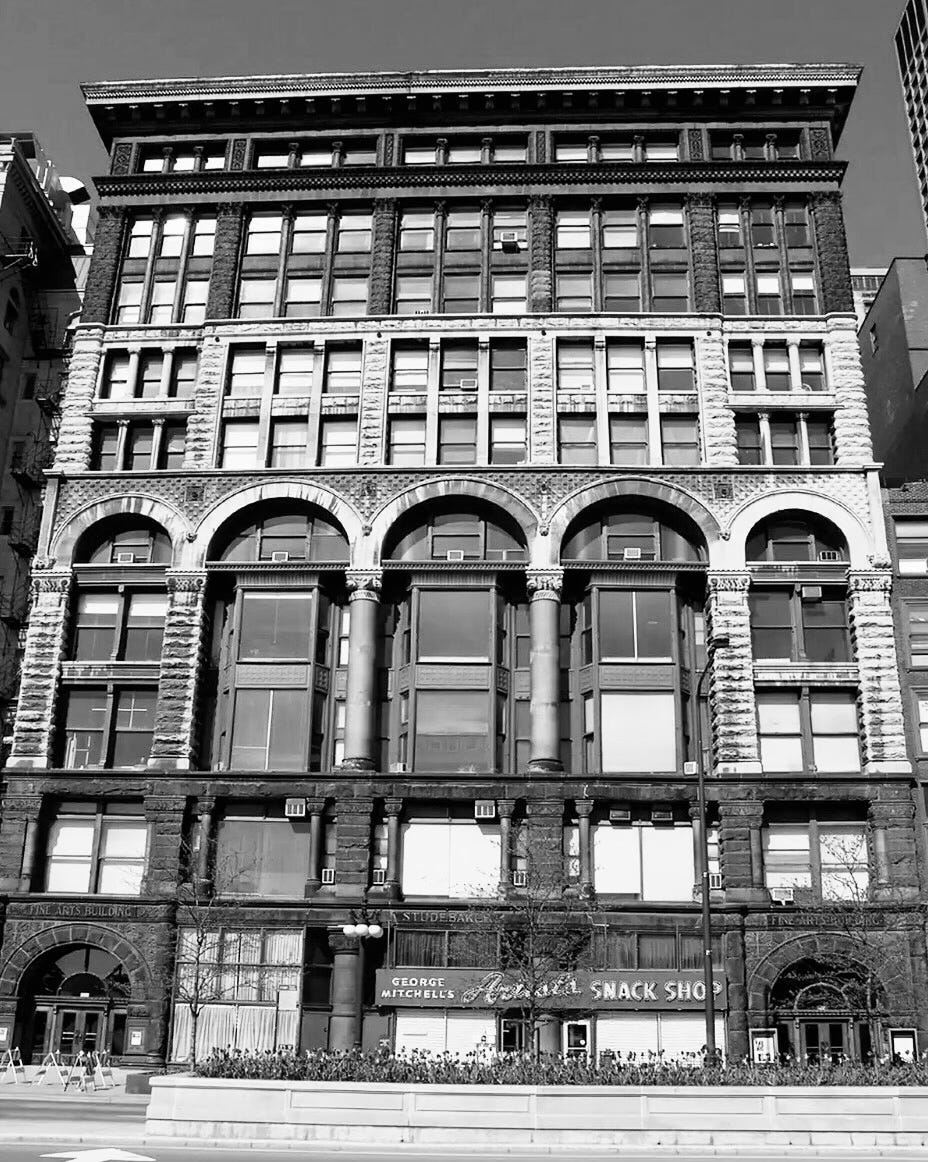
I love this. Lots. Shows your eyes, your heart, your empathy, your humanity, your generosity of spirit. And, gives me a bit of a model for contexts and encounters I want to recall before they’re gone.
The way your eyes and heart sees people delights me to nooo end!!!
I hate to be redundant, but I loved this read!
I’ve been in a couple of similarly spooky bathrooms so I was right there with you and how you experienced such. 😂